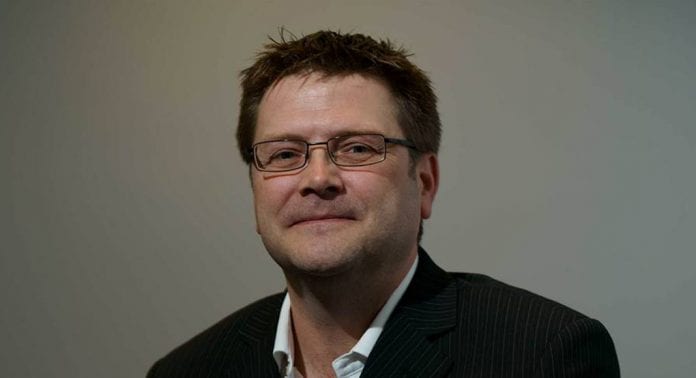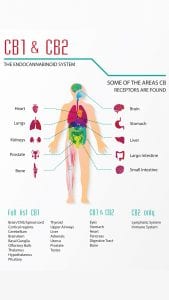
A coronavirus ‘good news’ story from innovator Medicaleaf, looking at the wellness revolution.
When a group of relative strangers with myriad strengths, experience and expertise find each other, share their perspectives and decide to do something in the name of a cause they passionately believe in, amazing things happen. In many cases the creative spark for change is triggered by an unexpected event – a ‘plot point’, as they call it in the movies – and it is from this point that the creative capability in collaboration becomes such a mighty force that revolutions can be started, huge changes can take place and new ideas can be birthed. We are watching this type of activity unfold in the news on a daily basis: unprecedented times for most, a ‘plot point’, a sense of uncertainty; and yet the opportunity for a new path forward… What will that look like? Such are the beginnings of Medicaleaf™, owned by its four founders and committed to the vision of ‘wellness from nature’. Why? Because we have all observed the positive effects of medicinal cannabis on diseases and conditions in Medicaleaf’s own families and know that the time is now.
Coronavirus good news
Any conversation about health or wellness at the present moment would be incomplete without mention of the coronavirus. It is without doubt the strangest of times in most of our history right now. A period which, 10 weeks in at the time of writing, sees more than a third of the world’s population now living under lockdown due to Covid-19. At the start of 2020, not many imagined a world where more than three billion people in almost 70 countries and territories were completely ‘confined to barracks’ and required to stay at home.
Understanding and guidance for combating coronavirus and its impact is developing daily. This period in history will be marked by a new understanding of things like personal protective equipment (PPE) and proper handwashing. Face masks have become an emblem, with officials recommending — and in some cases requiring — that people wear them to help slow the spread of the virus. Demand for N95 (offering protection from 95% of tiny particles) and medical masks means they have become an essential tool in saving those most at risk on the frontline: the elderly, infirm and those in the care industries. Already, the ‘call to arms’ and rallying of all sorts of troops to support those in need, repurposing, pivoting and contributing to the global effort to manage this pandemic, has seen individuals, organisations and businesses operating in new, collaborative and inclusive ways. You would be forgiven for thinking that you were in a dystopian dream world with no end in sight. Of course, we will come through it; things will change and, although many will sadly perish in the process, some good can come from the pandemic as a whole.
The virus has prompted a step change in the world’s perspective and who it values and celebrates. Actors, musicians and athletes now take a backseat to those actively fighting the virus: in the UK this is epitomised by the 8PM round of applause that resonates across the country every Thursday to show the nation’s gratitude to frontline, support and essential services.
Similarly, there has been a palpable shift – alongside the expected race for a vaccine – in preventative wellness, both mental and physical. Interest in and demand for cannabidiol (CBD) and immune system-boosting products has seen online sales surge; and for a company such as Medicaleaf, championing the role medicinal cannabis and cannabinoids can play in our lives, this is music to our ears.
CBD and wellness
The widening interest in ‘wellness’ as an alternative, preventative lifestyle, particularly in these times, fuels Medicaleaf’s fire. As an organisation, Medicaleaf is committed to creating a business that will assist in the alleviation of pain and suffering and collaboratively create products to assist in better wellbeing and healthier living. Whilst we make no medical claims – the Advertising Standards Agency (ASA) and Committees of Advertising Practice (CAP) prevent us from describing CBD products as a cure, to restore, prevent, avoid, fight or heal any conditions – more and more research is being done demonstrating the effects of and beneficial contexts for using CBD, and coronavirus is no different.
Over 200 million people in the UK and mainland Europe suffer from debilitating chronic pain, seizures and sleeping disorders as well as an equal number of increasingly enlightened people who can appreciate the recuperative benefit of cannabinoids. There is a clear movement away from ‘traditional’ medical practitioners and pharmaceutical companies and we aim to provide trusted and licensed products that can be bought legally and administered safely. Public awareness and open-mindedness towards alternative cures for lifelong conditions are growing; and the World Health Organization (WHO) reports research suggesting that CBD may have therapeutic benefits for many conditions, including:
- Multiple sclerosis
- Arthritis
- Spinal cord injury
- Epileptic seizures
- Alzheimer’s disease
- Parkinson’s disease
- Huntington’s disease
- Hypoxic-ischemic injury
- Chronic and acute pain
- Psychosis
- Nausea
- Inflammatory diseases
- Rheumatoid arthritis
- Inflammatory bowel disease
- Cardiovascular disease
- Diabetic complications
Research is ongoing: clinical trials to test the effectiveness of medicinal cannabis in all its forms will prove best use and lead to more government approved cannabis-based medicinal products (CBMPs) containing cannabidiol or CBD, joining those such as Epidyolex, which is already available on prescription in the UK for the treatment of seizures caused by two severe forms of epilepsy: Lennox-Gastaut syndrome and Dravet syndrome.
Apples and oranges
What do apples and oranges have to do with CBD? Eating an orange or taking supplements will both get vitamin C into the body. An orange can meet 139% of a person’s daily vitamin C requirements, just as supplements can supply more than adequate vitamin C. The difference is that an actual orange also provides vitamin A, thiamine, folate, calcium, potassium and many different other phytonutrients essential for wellness.
A phytonutrient is a compound in the fruit, often responsible for its colour and smell; phytonutrients contain powerful antioxidants which can help reduce inflammation and signs of ageing and which can assist in the absorption of other nutrients. Essentially you receive more overall nutritional value and health benefit from an actual orange than a vitamin C supplement.
Just like oranges and other plant-based foods, full spectrum CBD – as distinct from CBD isolate, which is the molecule on its own, CBD is considered full spectrum when extracted from the hemp plant with all additional cannabinoids and phytonutrients intact – contains a vast quantity of phytonutrients which work together to increase the effectiveness of the cannabinoid and overall health benefits. There are over 100 different cannabinoids in the cannabis plant, each of which has a different interaction with the body.
Alternative to mainstream and the entourage effect
Alternative medicine is exactly that, an alternative. Established medical services rely on drug companies, clinical testing and government approval to prescribe solutions to diagnosed conditions. For many patients this is effective, while others seek another route or bigger questions to answer. We live in a world of pills and quick fixes; and an alternative and more holistic approach to wellness is gaining momentum.
There is mounting evidence that medical substances produced by extraction from medicinal plants – as opposed to through organic synthesis – may be more effective in their whole and natural form, rather than isolating or producing the active ingredient in a laboratory. Combining multiple compounds in their natural state induces a multiplying effect, not just the sum of each part. The different compounds amplify each other’s chemistry, making the overall plant more effective in addressing unwanted symptoms. This phenomenon, called the entourage effect, results when the many chemical constituents of the cannabis plant interact with the human body to produce a stronger influence than any one of those components alone: it is a synergistic effect.
The entourage effect was discovered in 1999 by Dr Raphael Mechoulam, an organic chemist and Professor of Medicinal Chemistry at the Hebrew University of Jerusalem in Israel. Mechoulam had long been studying the properties of cannabis; and by 1963 he had determined the structure of cannabidiol (CBD), delta-9 tetrahydrocannabinol (THC) and many more.
Mechoulam’s team also studied how cannabis works in the brain and discovered the first known endogenous cannabinoid, a chemical actually made by the brain itself; which he named ‘anandamide’, from the Sanskrit ananda meaning ‘supreme bliss’. This discovery confirmed the team’s belief that, taken together, the components of the cannabis plant likely exert a more therapeutic effect than any single compound alone. Science continues to investigate and identify the role and mechanisms of all the various compounds and their benefits in human and animal health.
The human endocannabinoid system
One area of research whose importance scientists have only just begun to understand is the study of the human endocannabinoid system (HECS). The HECS is responsible for maintaining and controlling homeostasis, the body’s natural balance and regulation system.
Although, as Dr Mechoulam identified, the body produces its own endogenous cannabinoids, many scientists suggest that most people are now suffering from ‘cannabinoid deficiency’. Without sufficient cannabinoids in our diet, the HECS operates at less than peak efficiency, resulting in a general decline in overall health. These cannabinoids are:
- Endocannabinoids: endogenous fatty-acid cannabinoids produced naturally in the body, such as anandamide and 2-AG;
- Phytocannabinoids like THC and CBD, concentrated in the oily resin of the buds and leaves of plants such as cannabis; and
- Synthetic cannabinoids, which are manufactured by artificial means, for example in a laboratory.
First detected in the brain then elsewhere in the body, cannabinoid receptors can be ‘unlocked’ or effectively put to use by the presence of three kinds of cannabinoids. The receptors are identified as Cannabinoid Type 1 receptors (CB1-R) and Cannabinoid Type 2 receptors (CB2-R)2. (See Figure 1.)

In the immune system, one important function of the cannabinoid receptors is the regulation of cytokine release a fact that has not been overlooked in the current pandemic, where accumulating evidence suggests that a subgroup of patients with severe Covid-19 may experience a cytokine storm syndrome3 and that a medicinal cannabis-based treatment may be relevant.
One recent research paper4 suggested that cannabis sativa, especially a strain high in the anti-inflammatory cannabinoid CBD, could modulate gene expression and inflammation; as well as inhibiting the viral entry of respiratory pathogens, such as SARS-CoV2. The research focused on modulation of ACE2 levels in gateway tissues in order to demonstrate a strategy for decreasing susceptibility to disease. Results were very positive, although requiring further large scale validation; nevertheless, the research is crucial for the future analysis of the effects of medical cannabis on Covid-19 patients as an adjunct therapy, administered as mouthwash and throat gargle products.
A third receptor which gets little attention is the transient receptor potential vanilloid type one (TRPV1), whose primary function is to detect and regulate body temperature. In addition, TRPV1 is responsible for the sensations of extreme external heat and pain and can be subject to desensitisation. Therefore, if continuously stimulated, the pathway will eventually slow down or even stop. This raises therapeutic possibilities for agents to effectively treat certain kinds of neuropathic pain.
Medicaleaf: why we do what we do
All this research is relatively recent and discoveries are being made daily into how medicinal cannabis will be used in the future to treat conditions that might otherwise have been fatal. Medicaleaf’s business plan sees the creation of a range of lifestyle products under the Liift brand, bringing CBD to anyone who wants to explore its benefits safely, right through to medicinal cannabis preparations available from specialist centres nationwide for the treatment of a growing number of conditions, bringing the alternative to the mainstream. Or is it? Are we simply returning to ancient wisdom, tried and tested over millennia that finds wellness from nature?
Traditional Chinese medicine
Understanding that the HECS is responsible for maintaining and controlling homeostasis, the body’s natural balance and regulation system, helps in the understanding the ancient philosophy of traditional Chinese medicine and Yin-Yang, the dominant concept in Taoism, which describes two opposite halves that complement and complete each other.
The Taoists, who developed the system of traditional Chinese medicine, saw the universe as a unified field, continuously shifting and altering while maintaining its unity. The earliest evidence of this concept is found in inscriptions made on ‘oracle bones’ that date back to the 14th century BC. The opposing forces, the feminine yin and the masculine yang, are always joined and equally interdependent in the natural world; and harmony is achieved when the two forces are in balance.
Nature conveys itself in an endless cycle of polar opposites. The heat of the sun (yang) will dissolve the morning dew (yin); the evening night (yin) will be replaced by the morning sun (yang). Shadow cannot exist without light as yin cannot exist without yang. The two fundamental forms of qi (life force) are yin-qi and yang-qi: the feminine and masculine energies. The polarities that run through the philosophy are life and death, heaven and earth, night and day, health and sickness, poverty and wealth, positive and negative, and the cycles of season.
Fast becoming common parlance with modern wellness practitioners as an alternative to the established rationalist basis of Western medicine and as the foundation for numerous healing modalities, yin and yang are two halves which together represent wholeness. Yin and yang are also the starting point for change. When something is whole, by definition, it is unchanging and complete; and when it is split into two halves, this upsets the equilibrium. Both halves are chasing after each other as they seek a new balance.
Yin and yang are in constant flux. If one becomes unbalanced in the body, illness occurs. For example, since yin is cold, an excess of yin can cause illnesses such as insomnia and dry mouth. Conversely, a yang deficiency can cause cold limbs and a sickly complexion. Good health, then, is maintained by balancing yin and yang. And so ancient meets modern, and everything comes full circle.
Paradigm Shift
The immediate lesson to be drawn from an understanding of the basis of traditional Chinese medicine may go some way towards explaining the paradigm shift which is needed as we look for alternatives to dependence, side effects and inefficacy of drugs in favour of proactive wellness and placing prevention ahead of cure. We term this approach ‘wellness from nature’.
Medicaleaf’s vision
Medicaleaf’s vision is to create an organisation that will assist in the alleviation of pain and suffering and collaboratively create products to assist in better wellbeing and healthier living, achieving ‘wellness from nature’. Like so many, we have all had significant experiences and have observed the positive effects of medicinal cannabis on diseases and conditions in our own families. We want to see these recent discoveries – the HECS, entourage effect and growing clinical understanding of cannabinoids – as the foundation of a ‘new medicine’ that nurtures in advance and heals gently from within, working with the body’s natural, inbuilt healing systems.
Carlie’s Story
After a car accident in 2016, Carlie, a wellness advocate, had to put life on hold. After working in health and fitness for 18 years, travelling all over the world, visiting wellbeing events and helping others, the car accident – in which she suffered major injuries, resulting in chronic pain – looked likely to end this. Specialists spent two years trying to treat her traditionally, but no form of therapy was alleviating her pain. She just started to just learn to live with the chronic pain. Carlie started taking CBD and, after just two days, noticed that the pain had massively reduced. Having used CBD once a day for six months, it is now firmly part of her wellness practice. Now she is travelling the world and practising, sharing her own wellness journey as a health and fitness speaker again.
Wellness from nature with Medicaleaf
Medicaleaf’s business represents the efforts of many whose vision is to improve the quality of life for those suffering from pain and ailments. We aim to create a recognised global consumer brand firmly associated with wellness from nature and to be philanthropic and profitable in respectable balance. If you share Medicaleaf’s vision, join us!
References
1 https://www.who.int/medicines/access/controlled-substances/5.2_CBD.pdf
2 https://www.ncbi.nlm.nih.gov/pmc/articles/PMC5877694/
3 https://www.thelancet.com/journals/lancet/article/PIIS0140-6736(20)30628-0/fulltext
4 https://www.preprints.org/manuscript/202004.0315/v1
Richard Reed
Managing Director
richardr@medicaleaf.org
medicaleaf.org.uk
This article is for issue 3 of Medical Cannabis Network. Click here to get your free subscription today.









